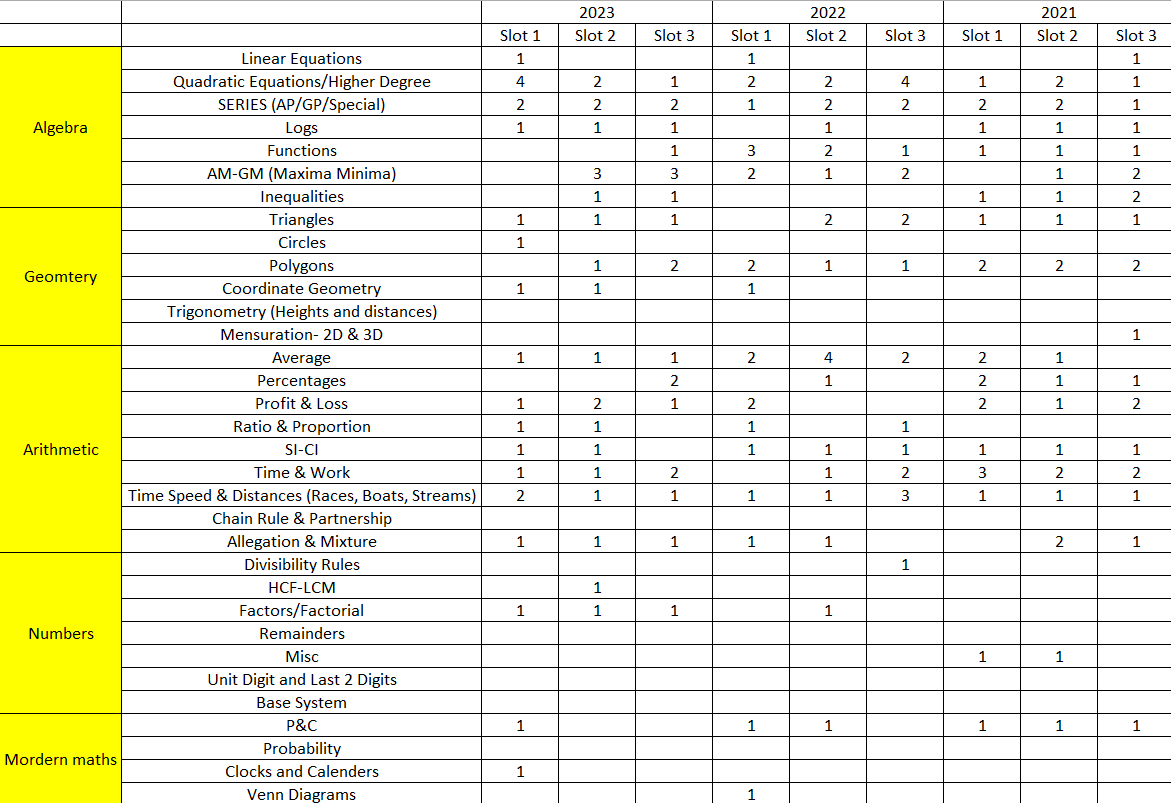Mastering the CAT Syllabus: A strategic guide to score 99%ile
- Quantifiers
- 27th March 2024
Are you feeling overwhelmed by the vast CAT syllabus? Looking for a proven strategy to cover the entire syllabus efficiently? You’ve come to the right place! In this guide, we will provide you with a strategic approach and effective preparation tips to ensure comprehensive CAT syllabus coverage.
Join our WhatsApp FREE 24/7 Doubt Solving Group
Key Takeaways:
- Follow a strategic approach to cover the entire CAT syllabus efficiently.
- Understand the different sections of the CAT exam syllabus.
- Create a comprehensive study plan to effectively cover the syllabus.
- Implement practical strategies like topic prioritization and time management.
- Utilize mock tests and practice papers to enhance your performance.
Understanding the CAT Exam Syllabus
Before diving into your CAT preparation, it is crucial to have a clear understanding of the CAT exam syllabus. This section will provide an overview of the different sections covered in the CAT exam, including Verbal Ability and Reading Comprehension, Data Interpretation and Logical Reasoning, and Quantitative Ability. We will also discuss how to create a comprehensive study plan to cover the syllabus effectively.
1. Multiple Choice Questions (MCQs)
MCQs are a common question type in the CAT exam. In this format, you are presented with a question and a set of options, and you must choose the correct answer from the given options. These questions test your knowledge and critical thinking skills
We with our expert faculty compiled ideal CAT 2024 preparation materials
2. Data Interpretation (DI) Questions
Data Interpretation questions assess your ability to analyze and interpret data presented in the form of tables, graphs, and charts. You will be required to extract relevant information, make calculations, and draw conclusions based on the given data.
Different types of sets with video explanations to understand the best methodologies are very important.
3. Logical Reasoning (LR) Questions
4. Verbal Ability (VA) Questions
5. Quantitative Aptitude (QA) Questions

Question Type | Format |
Multiple Choice Questions (MCQs) | Choose the correct option from given choices |
Data Interpretation (DI) Questions | Analyze and interpret data from tables, graphs, and charts |
Logical Reasoning (LR) Questions | Solve puzzles, analyze patterns, evaluate arguments |
Verbal Ability (VA) Questions | Grammar rules, vocabulary usage, reading comprehension |
Quantitative Aptitude (QA) Questions | Mathematical and problem-solving skills |
Effective Strategies to Cover the CAT Syllabus
Benefits of CAT Coaching:
- 1 DILR Set
- 10 Quant Questions
- 1 RC Tests
- 1 Read of the day
Seems like a lot? Remember the moment you start building the habit of doing and completing Daily tasks in hand you will be able to do a lot
Where to practice all the above checklists?
Well Quantfiers DAILY Targets cover everything!
Daily Practice
1. Find Your Motivation Source- Join a Study Group
Join our WhatsApp FREE 24/7 Doubt Solving Group
2. Find a mentor you can talk to and who can guide you well
To connect with us, for mentorship and daily test practice
DM us on Instagram or WhatsApp. We reply back 24/7. Get your CAT prep started
3. Mock Tests and Practice Papers
Strategy | Advantages |
Topic Prioritization | – Focus on important areas – Allocate time wisely |
Time Management | – Stay organized – Set realistic targets |
Resource Selection | – Choose reliable materials – Access a variety of resources |
Mock Tests and Practice Papers | – Evaluate performance – Identify areas for improvement |

